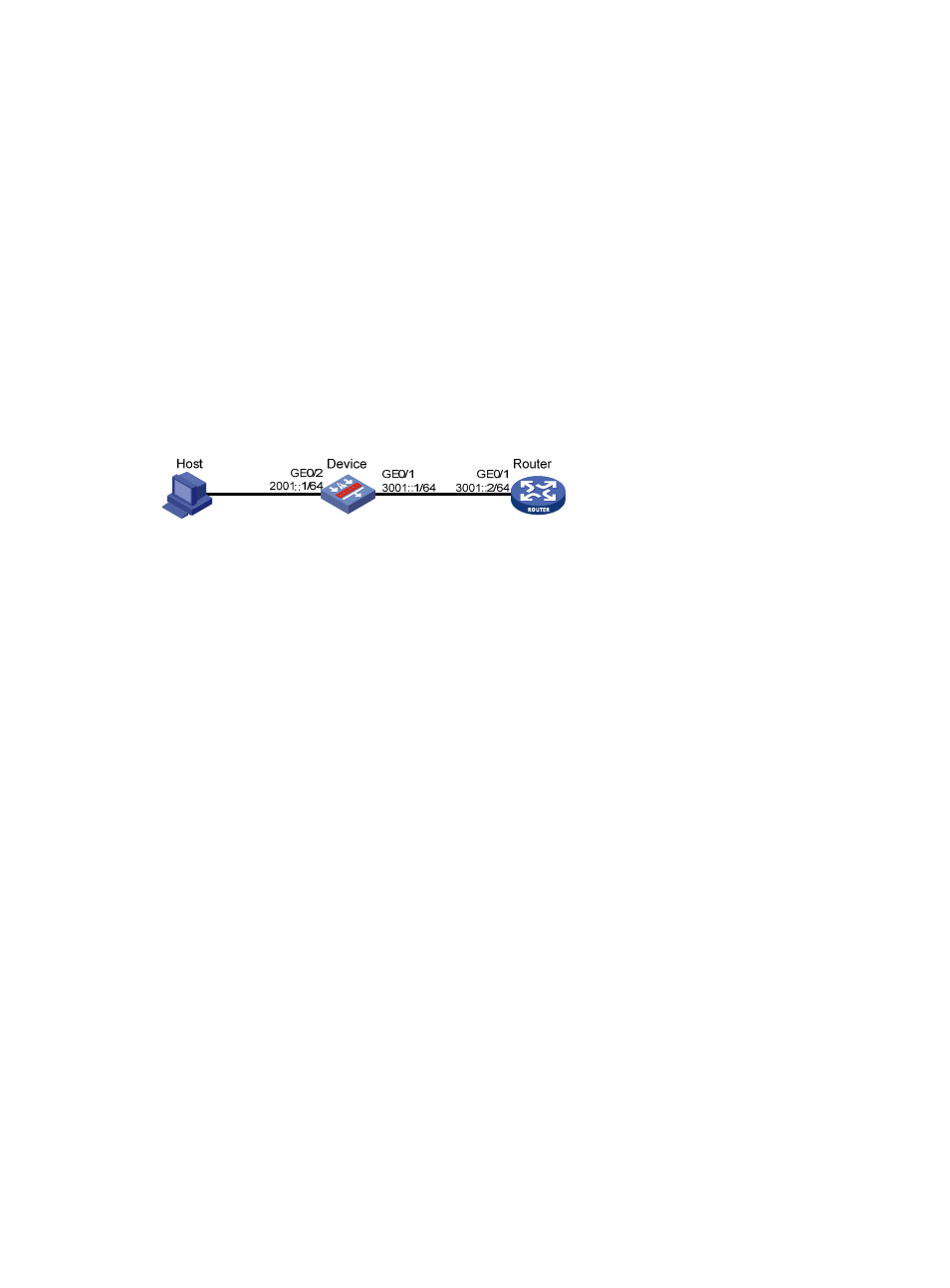Ipv6 configuration example, Network requirements, Configuration procedure – H3C Technologies H3C SecPath F1000-E User Manual
Page 125

25
IPv6 Configuration Example
Network requirements
•
The host, device and router are directly connected through GigabitEthernet interfaces. Configure
IPv6 addresses for the interfaces and verify that they are connected.
•
The global unicast address of GigabitEthernet 0/1 and GigabitEthernet 0/2 on the device are
3001::1/64 and 2001::1/64 respectively.
•
The global unicast address of GigabitEthernet 0/1 on the router is 3001::2/64, and a route to the
host is available.
•
The host is enabled with IPv6 to automatically obtain an IPv6 address through IPv6 ND, and has a
route to the router.
Figure 7 Network diagram for IPv6 address configuration
Configuration procedure
1.
Configure the device
# Enable IPv6.
[Device] ipv6
# Assign a global unicast address for interface GigabitEthernet 0/1.
[Device] interface gigabitethernet 0/1
[Device-GigabitEthernet0/1] ipv6 address 3001::1/64
[Device-GigabitEthernet0/1] quit
# Assign a global unicast addresses for interface GigabitEthernet 0/2 and allow it to advertise RA
messages (no interface advertises RA messages by default).
[Device] interface gigabitethernet 0/2
[Device-GigabitEthernet0/2] ipv6 address 2001::1/64
[Device-GigabitEthernet0/2] undo ipv6 nd ra halt
[Device-GigabitEthernet0/2] quit
2.
Configure the router
# Enable IPv6.
[Router] ipv6
# Assign a global unicast address for interface GigabitEthernet 0/1.
[Router] interface gigabitethernet 0/1
[Router-GigabitEthernet0/1] ipv6 address 3001::2/64
[Router-GigabitEthernet0/1] quit
# Configure an IPv6 static route with destination IP address 2001::/64 and next hop address 3001::1.
[Router] ipv6 route-static 2001:: 64 3001::1
